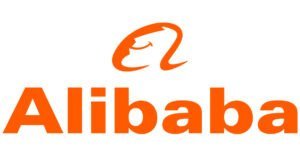Introduction
Welcome to the Ultimate Guide: Selling on Amazon with Alibaba. If you’re looking to boost your Amazon business, Alibaba is your ticket to success. Let’s delve into how you can leverage Alibaba to enhance your Amazon selling journey.

Understanding Alibaba
What is Alibaba?
Alibaba is a vast online marketplace connecting buyers and sellers globally. It offers a wide range of products, from electronics to fashion, catering to diverse consumer needs.
Exploring Alibaba’s Platform
Alibaba’s platform is user-friendly, with intuitive navigation tools. You can easily browse through categories, filter search results, and explore product details.
Types of Sellers on Alibaba
Alibaba hosts various types of sellers, including manufacturers, wholesalers, and trading companies. Understanding these distinctions can help you choose the right supplier for your business needs.
Benefits of Sourcing from Alibaba
Alibaba offers several advantages for Amazon sellers, making it a preferred sourcing platform.
Cost-Effectiveness
One of the primary benefits of Alibaba is its cost-effectiveness. You can find products at competitive prices, allowing you to maximize your profit margins on Amazon.
Wide Product Selection
With millions of products available on Alibaba, you have access to a vast selection to choose from. Whether you’re looking for popular items or niche products, Alibaba has you covered.
Quality Control Measures
Alibaba prioritizes quality control, ensuring that products meet specified standards. Many suppliers offer certifications and guarantees, giving you peace of mind about product quality.
Getting Started
Setting Up Your Alibaba Account
To get started, you’ll need to create an Alibaba account. The registration process is simple and straightforward, requiring basic information such as your email address and company details.
Registration Process
Sign up for an Alibaba account by providing your email address and creating a password. You may also need to verify your account through email or phone verification.
Creating Your Profile
After registering, complete your profile by providing essential information about your business, including your company name, address, and contact details.
Navigating Alibaba’s Interface
Once your account is set up, familiarize yourself with Alibaba’s interface to make the most of your sourcing experience.
Browsing Products
Explore Alibaba’s extensive product categories to find items that align with your Amazon business niche. Use filters and search tools to narrow down your options.
Communicating with Suppliers
Effective communication with suppliers is key to successful sourcing. Use Alibaba’s messaging system to reach out to potential suppliers and discuss your requirements.

Finding Profitable Products
Researching High-Demand Items
Before sourcing products from Alibaba, conduct thorough research to identify high-demand items that are likely to sell well on Amazon.
Using Amazon’s Best Sellers List
Browse Amazon’s Best Sellers list to discover trending products and popular categories. Analyze product rankings and customer reviews to gauge demand.
Analyzing Market Trends
Stay updated on market trends and consumer preferences to identify profitable product opportunities. Monitor industry publications, social media trends, and market research reports.
Assessing Profit Margins
Determining profit margins is crucial when selecting products to sell on Amazon. Consider factors such as product costs, shipping fees, and Amazon’s selling fees.
Factoring in Costs
Calculate the total cost of sourcing products from Alibaba, including product prices, shipping costs, import duties, and any other expenses.
Calculating Potential Revenue
Estimate your potential revenue by analyzing selling prices, sales volumes, and profit margins. Use tools like Amazon’s FBA revenue calculator to forecast your earnings.
Selecting Reliable Suppliers
Evaluating Supplier Profiles
Choosing the right supplier is essential for sourcing high-quality products. Take time to evaluate supplier profiles and assess their credibility.
Checking Ratings and Reviews
Review supplier ratings and read customer feedback to gauge their reliability and reputation. Look for suppliers with high ratings and positive reviews from previous buyers.
Verifying Certifications
Check if suppliers have relevant certifications, such as ISO or FDA certifications, indicating their compliance with quality and safety standards.
Communicating with Suppliers
Effective communication with suppliers is crucial for establishing a successful business relationship. Ask relevant questions and clarify any doubts before placing orders.
Asking the Right Questions
Prepare a list of questions to ask suppliers regarding product specifications, pricing, lead times, and payment terms. Clear communication ensures mutual understanding and prevents misunderstandings.
Negotiating Prices and Terms
Negotiate prices and terms with suppliers to secure the best deals. Be polite but firm in your negotiations, and aim for a win-win outcome for both parties.

Placing Orders
Requesting Samples
Before placing bulk orders, it’s essential to request samples to assess product quality and suitability for your Amazon business.
Importance of Sample Testing
Sampling testing allows you to evaluate product quality, functionality, and packaging before committing to large-scale orders.
Sample Ordering Process
Contact suppliers to request samples, specifying your requirements and any customization preferences. Pay for samples and shipping fees, and await their arrival for evaluation.
Negotiating Terms
Once satisfied with the samples, negotiate terms with suppliers regarding pricing, payment methods, shipping arrangements, and lead times.
Payment Options
Discuss payment options with suppliers, such as bank transfers, credit cards, or trade assurance. Choose a secure payment method that offers buyer protection.
Shipping Methods and Costs
Agree on shipping methods and costs with suppliers, considering factors like shipping time, shipping carriers, and freight forwarding services.
Managing Inventory
Establishing Inventory Levels
Maintaining optimal inventory levels is essential for fulfilling customer orders promptly and minimizing storage costs.
Understanding Amazon’s Storage Fees
Familiarize yourself with Amazon’s storage fees and storage limits to avoid unnecessary storage charges.
Forecasting Sales
Use sales data and market trends to forecast demand and determine the appropriate inventory levels for your Amazon products.
Monitoring Stock Levels
Regularly monitor stock levels to ensure adequate inventory availability and prevent stockouts or overstocking situations.
Implementing Inventory Management Systems
Consider using inventory management software or tools to streamline inventory tracking, reorder management, and stock replenishment processes.
Reordering Strategies
Develop effective reorder strategies based on sales velocity, lead times, and reorder points to replenish stock in a timely manner.
Creating Your Amazon Seller Account
Registering as a Seller
To start selling on Amazon, you’ll need to register as a seller and set up your seller account.
Choosing the Right Seller Plan
Select the appropriate seller plan based on your business needs, whether it’s an individual seller account or a professional seller account.
Providing Business Information
Complete your seller profile by providing accurate business information, including your company name, address, and tax identification number.
Setting Up Your Seller Profile
Customize your seller profile to showcase your brand and attract potential customers.
Optimizing Your Seller Profile Page
Optimize your seller profile page with relevant keywords, compelling product descriptions, and high-quality images to enhance visibility and credibility.
Adding Product Listings
Create product listings for your Amazon products, including detailed product descriptions, pricing information, and images.

Optimizing Product Listings
Writing Compelling Product Descriptions
Craft engaging and informative product descriptions that highlight the features, benefits, and unique selling points of your products.
Incorporating Keywords
Include relevant keywords in your product descriptions to improve search visibility and attract organic traffic.
Highlighting Unique Selling Points
Differentiate your products from competitors by highlighting their unique features, quality, and value proposition.
Creating Eye-Catching Images
Invest in professional product photography to showcase your products in the best possible light.
Guidelines for Product Photography
Follow best practices for product photography, such as using high-resolution images, multiple angles, and clear backgrounds.
Using Infographics and Lifestyle Images
Enhance product listings with infographics and lifestyle images to demonstrate product usage, benefits, and scale.
Managing Your Amazon Store
Monitoring Sales Performance
Track key performance metrics to evaluate the success of your Amazon store and identify areas for improvement.
Tracking Sales Metrics
Monitor sales metrics such as revenue, units sold, conversion rates, and average order value to assess your store’s performance.
Analyzing Customer Feedback
Pay attention to customer feedback and reviews to gain insights into product satisfaction, identify issues, and address customer concerns.
Optimizing Pricing Strategies
Adjust pricing strategies to remain competitive and maximize profitability in the dynamic Amazon marketplace.
Adjusting Prices According to Demand
Regularly review and adjust prices based on market demand, competitor pricing, and seasonality to optimize sales and revenue.
Offering Discounts and Promotions
Run promotions, discounts, and special offers to attract customers, drive sales, and increase customer loyalty.
Handling Fulfillment
Fulfillment by Amazon (FBA) vs. Self-Fulfillment
Choose between Fulfillment by Amazon (FBA) and self-fulfillment based on your business model, inventory management capabilities, and customer service preferences.
Pros and Cons of Each Option
Evaluate the advantages and disadvantages of FBA and self-fulfillment, considering factors such as fulfillment costs, shipping convenience, and order volume.
Choosing the Right Fulfillment Method
Select the fulfillment method that aligns with your business goals, budget, and operational requirements for efficient order processing and delivery.
Using FBA Services
If opting for FBA, utilize Amazon’s fulfillment services to streamline order fulfillment and enhance customer satisfaction.
Sending Inventory to Amazon’s Fulfillment Centers
Prepare and ship inventory to Amazon’s fulfillment centers, adhering to their guidelines and requirements for efficient processing and storage.
Managing FBA Orders and Returns
Monitor FBA orders and handle returns promptly to maintain customer satisfaction and uphold Amazon’s performance standards.
Implementing Marketing Strategies
Leveraging Amazon Advertising
Utilize Amazon’s advertising tools and services to increase product visibility, drive traffic, and boost sales.
Sponsored Product Ads
Run sponsored product ads to target relevant keywords and promote your products to potential customers actively searching on Amazon.
Amazon DSP (Demand-Side Platform)
Explore Amazon’s Demand-Side Platform (DSP) for advanced advertising options, including display and video ads to reach a broader audience.
Building Brand Awareness
Invest in brand-building initiatives to enhance your brand visibility, credibility, and customer loyalty on Amazon.
Creating Social Media Campaigns
Launch social media campaigns to engage with your target audience, build relationships, and drive traffic to your Amazon store.
Collaborating with Influencers
Partner with influencers and content creators to endorse your products, reach new audiences, and amplify your brand’s message.
Ensuring Customer Satisfaction
Providing Excellent Customer Service
Deliver exceptional customer service to build trust, loyalty, and positive brand reputation on Amazon.
Responding to Inquiries Promptly
Respond to customer inquiries and messages promptly, addressing their questions, concerns, and feedback in a timely manner.
Handling Returns and Refunds
Handle returns and refunds efficiently, following Amazon’s policies and procedures to resolve issues and maintain customer satisfaction.
Soliciting Feedback
Encourage customers to leave feedback and reviews on your products, helping to build social proof and credibility for your brand.
Encouraging Reviews
Prompt satisfied customers to leave positive reviews by sending follow-up emails, offering incentives, or including inserts in product packaging.
Addressing Negative Feedback
Respond to negative feedback professionally and proactively, addressing customer concerns and offering solutions to rectify the situation.
Scaling Your Amazon Business
Expanding Your Product Line
Diversify your product offerings by expanding into complementary product categories or introducing new variations of existing products.
Identifying Niche Opportunities
Research niche markets and product categories with high demand and low competition to capitalize on untapped opportunities.
Diversifying Your Offerings
Offer a diverse range of products to cater to different customer preferences, needs, and demographics, expanding your customer base and revenue streams.
Exploring International Markets
Expand your reach by selling globally on Amazon’s international marketplaces, tapping into new markets and customer segments.
Selling Globally with Amazon
Utilize Amazon’s global selling programs and services to list and fulfill products in international marketplaces, reaching customers worldwide.
Overcoming Language and Cultural Barriers
Adapt your product listings, marketing materials, and customer support to accommodate language and cultural differences in target markets, enhancing customer experience and engagement.
Frequently Asked Questions (FAQs)
What is Alibaba and how does it relate to selling on Amazon?
Alibaba is a leading online marketplace connecting buyers and sellers globally. Sellers can source products from Alibaba to sell on platforms like Amazon, leveraging its wide product selection and cost-effectiveness.
How do I get started with Alibaba?
To get started with Alibaba, you’ll need to create an account, browse products, and communicate with suppliers. Setting up your account involves a simple registration process, followed by exploring Alibaba’s platform and contacting potential suppliers.
How can I find profitable products on Alibaba to sell on Amazon?
Researching high-demand items, analyzing market trends, and assessing profit margins are key steps in finding profitable products on Alibaba. By identifying popular products with good profit potential, you can optimize your Amazon sales strategy.
How do I choose reliable suppliers on Alibaba?
Evaluating supplier profiles, checking ratings and reviews, and verifying certifications are essential for selecting reliable suppliers on Alibaba. Building trust with reputable suppliers ensures product quality and reliable service.
What should I consider when placing orders on Alibaba?
When placing orders on Alibaba, it’s important to request samples for quality testing, negotiate terms with suppliers, and clarify payment and shipping arrangements. Effective communication and negotiation ensure smooth transactions and minimize risks.
How do I manage inventory sourced from Alibaba for my Amazon business?
Establishing inventory levels, monitoring stock levels, and implementing inventory management systems are key to managing inventory sourced from Alibaba. By optimizing inventory levels and tracking sales performance, you can prevent stockouts and maximize efficiency.
How do I create and optimize my Amazon seller account?
Registering as a seller, setting up your seller profile, and adding product listings are essential steps in creating and optimizing your Amazon seller account. Optimizing product listings with compelling descriptions and images enhances visibility and attracts customers.
What marketing strategies can I use to promote my Amazon products sourced from Alibaba?
Leveraging Amazon advertising, building brand awareness, and collaborating with influencers are effective marketing strategies for promoting Amazon products sourced from Alibaba. By reaching a wider audience and building brand loyalty, you can drive sales and grow your business.
How do I handle fulfillment for my Amazon products sourced from Alibaba?
Choosing between Fulfillment by Amazon (FBA) and self-fulfillment, sending inventory to Amazon’s fulfillment centers, and managing FBA orders and returns are important aspects of handling fulfillment for Amazon products sourced from Alibaba. Selecting the right fulfillment method and optimizing order processing ensure timely delivery and customer satisfaction.
What are some tips for scaling my Amazon business with products sourced from Alibaba?
Expanding your product line, exploring international markets, and overcoming language and cultural barriers are effective strategies for scaling your Amazon business with products sourced from Alibaba. By diversifying your offerings and reaching new markets, you can achieve sustained growth and success.
Conclusion
Congratulations! You’re Ready to Dominate Amazon with Alibaba. By leveraging the power of Alibaba’s sourcing platform and implementing effective selling strategies on Amazon, you can achieve success and scale your e-commerce business to new heights.
Final Tips for Continued Success
- Stay updated on market trends and consumer preferences to adapt your selling strategies accordingly.
- Continuously optimize your product listings, pricing, and marketing efforts to maximize sales and profitability.
- Build strong relationships with suppliers and customers to foster trust, loyalty, and long-term success in your Amazon business journey.

전신스타킹
좋은 것